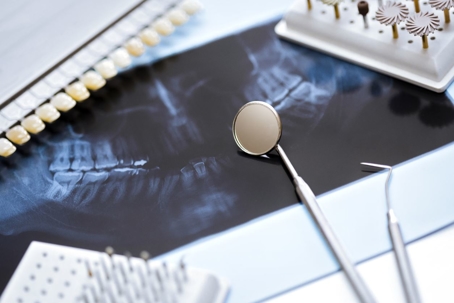What Are Dental Veneers?
Dental veneers are very thin shells that dentists place over prepared teeth to both improve their look and even improve the way their patients eat and speak. Though thought of as a cosmetic procedure, there are other benefits other than looks. Here’s what you need to know if you're considering veneers:
Uses for Dental Veneers
Patients come to us for dental veneers for a variety of reasons, but here are four of the most common:
1. Discolored Teeth
Teeth can become discolored for a host of reasons, but veneers are a universal fix. Dentists categorize stains as:
• Extrinsic stains occur when pigments start to build upon the protein that lies on top of the tooth enamel. These stains are caused by smoking or by heavy use of coffee, tea, red wine or sodas. Extrinsic stains can usually be corrected by diligent brushing or having your teeth cleaned at your dentist’s.
• Intrinsic stains are more problematic than extrinsic stains because they’ve penetrated through the top part of the teeth and infiltrate the enamel. This makes these stains much harder to get rid of. These types of stains occur in the teeth of children who’ve been exposed to too much fluoride.
• Age-related stains usually are a problem later in life. As a person gets older, the dentin of the teeth, which is found beneath the enamel, starts to turn yellow, and the enamel itself starts to thin out. Because of this, the yellow of the dentin is easier to see. Add extrinsic and intrinsic stains, and a person can have teeth that are seriously discolored.
Other things that can stain the teeth include bad dental hygiene and trauma to the tooth enamel. Damage to the enamel can begin in the womb. Teeth can also discolor when the patient undergoes cancer treatment or other types of medical therapies. Drugs meant for high blood pressure and allergies have also been known to discolor teeth.
2. Gapped Teeth
A gap between the teeth is called a diastema. Lots of our patients have gaps between their two front teeth, and while some of them think their gaps are charming, others want to be rid of them. This is where dental veneers come in.
There are many reasons why a person would have a gap in their teeth. Some people have teeth that are too small for their jaw. This can be the fault of genetics, and it’s common for families to have more than one person with a diastema. There might be too much tissue at the edge of the gum line and the teeth, which forces them apart. Other causes are swallowing the wrong way, thumb-sucking or gum disease. Regardless of the reasoning, dental veneers can help to fill that space in to make it less noticeable.
3. Crooked Teeth
As with gaps and stains, there are many reasons for a person to have crooked teeth. Unlike people with diastema, people with crooked teeth sometimes have teeth that are too large for their jaw, and crowding occurs. Other people have a mismatched upper and lower jaw. One is bigger than the other, which also causes crowding. As with gaps in the teeth, crowded teeth can also be inherited. Veneers can help correct crooked teeth by helping to blend the tooth in with the rest of your smile and create a more even look.
4. Teeth with Damaged Enamel
Enamel is the hardest material in the body. It is even harder than bone, but it can be worn away or damaged even as it protects the tooth from all the substances that come into contact with it. When tooth enamel starts to erode, your teeth may become sensitive to hot and cold foods and beverages, are also more susceptible to stains. Other signs are chips and cracks in the teeth. If the problem isn’t fixed, the edges of the teeth can feel rough, the surface of the tooth can be speckled with tiny, bright spots, and the tooth is more at risk of cavities and fractures.
Dental veneers can correct these problems. When veneers are applied, a millimeter or so of the enamel needs to be removed from the tooth, but if there is already a layer of enamel missing, your teeth are more prepared to take on the veneers. The size of the tooth itself can be altered before the veneers can be placed.
Nowadays, porcelain veneers can be so lifelike that only the dentist and patient know they’re not real! If you don’t like the look of your teeth, whether they are crooked, discolored or chipped, consider dental veneers. Call today for a consultation with Dr. Robert Neal, DDS at (972) 200-0656!

